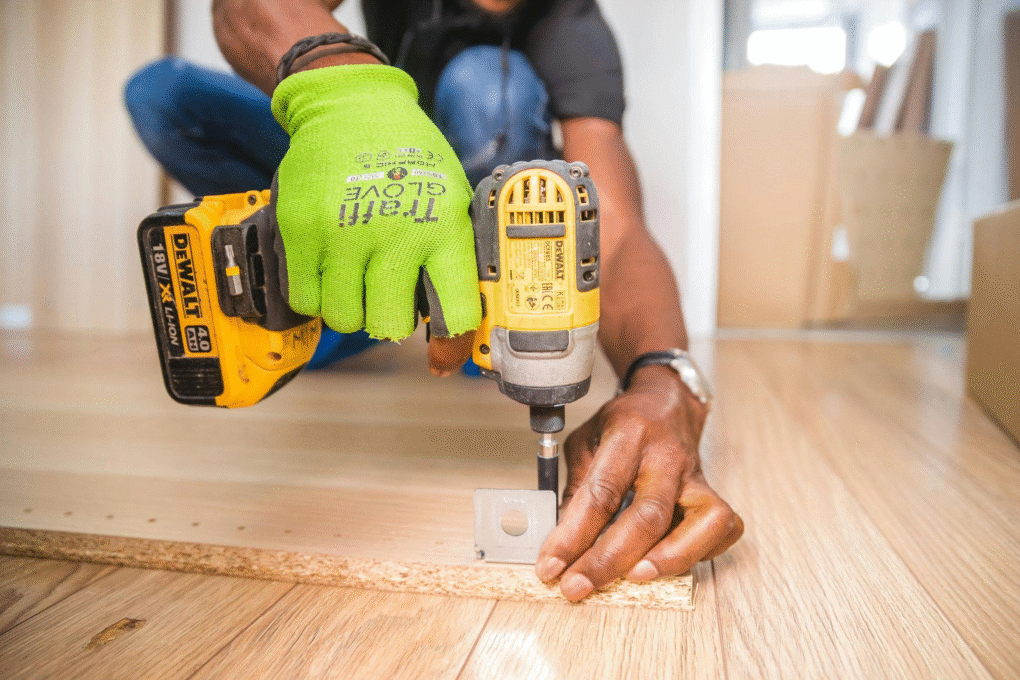Fall sneaks up quickly, doesn’t it? One week, you’re mowing the lawn, and the next, you’re reaching for a jacket. If you live in a place like Indianapolis, where the weather can shift fast, it’s a good idea to get ahead of seasonal changes. Prepping your home before colder temperatures settle in can help you avoid problems later on.
This fall maintenance checklist isn’t about big, expensive projects. It’s just a few smart steps that help keep your home in good shape through the months ahead. From your windows to your gutters, we’ll walk through the basics—easy things you can do now for a smoother winter season.

1. Check Windows and Doors for Drafts
When the temperature drops, your house can lose a lot of heat through small gaps you barely notice. That’s why it’s a good idea to walk around and feel for any cold air coming in near windows or doors. Run your hand along the edges. If it’s breezy, you’ve found a problem. You can also use a lighter or candle to check—if the flame flickers, you’ve got air sneaking through.
Weather stripping and caulk are easy fixes that can help seal those areas. They don’t cost much and only take a few minutes to apply. But if your windows are older, rotted, or just not doing their job anymore, it might be time to replace them.
If that’s the case, calling a local Indianapolis window installation company could be the right move. New energy-efficient windows not only keep out drafts but also help lower your heating bill. Many homeowners in Indianapolis make window upgrades part of their fall prep—and it makes sense. Winter isn’t gentle here, so your windows need to be ready.
2. Clean Out Gutters and Downspouts
Leaves are pretty when they’re falling but not so pretty when they’re clogging your gutters. If water can’t flow freely, it may back up onto your roof or run down toward your foundation. That’s a recipe for water damage and expensive repairs.
Grab a sturdy ladder, gloves, and a bucket. Clear out leaves, twigs, and anything else that’s built up. Then, run some water through the gutters with a hose to make sure the downspouts are clear. Finally, check that the downspouts are angled to send water away from your home.
If you notice sagging sections or leaks, it might be worth getting repairs or installing gutter guards to reduce future clogs.
3. Inspect the Roof
You don’t need to climb up there (and shouldn’t, unless you’re trained), but a quick visual inspection from the ground can help you catch issues early. Look for missing shingles, dark spots, or anything that looks uneven.
If you’ve had heavy summer storms, it’s especially important to check. Damage that seems small now could turn into a leak during the next snow or ice storm. If anything looks off, call a roofing pro for a more detailed look before winter weather makes repairs harder to schedule.
4. Test the Furnace and Change the Filters
You don’t want your furnace to fail on the first freezing night of the year. Go ahead and turn it on while the weather’s still mild, just to make sure it runs smoothly. If you hear strange noises or it doesn’t warm up quickly, schedule a service call.
Also, change the air filter. Dirty filters make your furnace work harder and lower your indoor air quality. A fresh filter is a simple way to keep your system efficient.
Some homeowners also choose to have their furnaces professionally cleaned each fall. If yours is older or you’ve skipped maintenance in the past, that might be a good idea.
5. Seal Driveway Cracks and Walkway Gaps
Small cracks in your driveway or sidewalks might not seem like a big deal now, but when water freezes and expands, those cracks grow fast. That can lead to tripping hazards and costly repairs.
Take a walk around your property and check for gaps or crumbling spots. You can pick up an easy-to-use sealant from any hardware store. It’s a simple weekend job that can make a difference by spring. Sealing now also helps keep moisture from seeping beneath the surface and causing further damage.
6. Trim Trees and Remove Debris
Overhanging branches can be dangerous when ice or snow builds up. If you have any dead or weak branches near your house or power lines, it’s smart to trim them now.
Also, clean up leaves, twigs, and other debris from your yard—especially near the foundation. Wet leaves can trap moisture and attract bugs or rodents looking for shelter. Keeping things tidy helps protect your home and makes spring cleanup easier.
If any trees look unstable or sick, consider having an arborist take a look before winter storms do more damage.
7. Check Smoke and Carbon Monoxide Detectors
As homes get sealed up for winter and heating systems kick on, the risk of carbon monoxide leaks and house fires goes up. That’s why now is the time to test all your detectors.
Press the test button on each one. Replace batteries if needed, and check the expiration dates—yes, detectors have them! If any alarms are over 10 years old, it’s a good idea to replace them altogether. Make sure you have a working smoke detector on every floor and at least one carbon monoxide detector, especially near sleeping areas.
It doesn’t take much to get your home ready for fall, but the payoff is huge. A few simple tasks now can save you from dealing with leaks, drafts, or emergency repairs when it’s freezing outside. You don’t have to do everything in one day—just chip away at the list over a couple of weekends.
Fall is a great time to take care of your home before colder weather sets in. So grab your checklist, take a walk around the house, and start crossing off those items. You’ll be glad you did when winter arrives.
